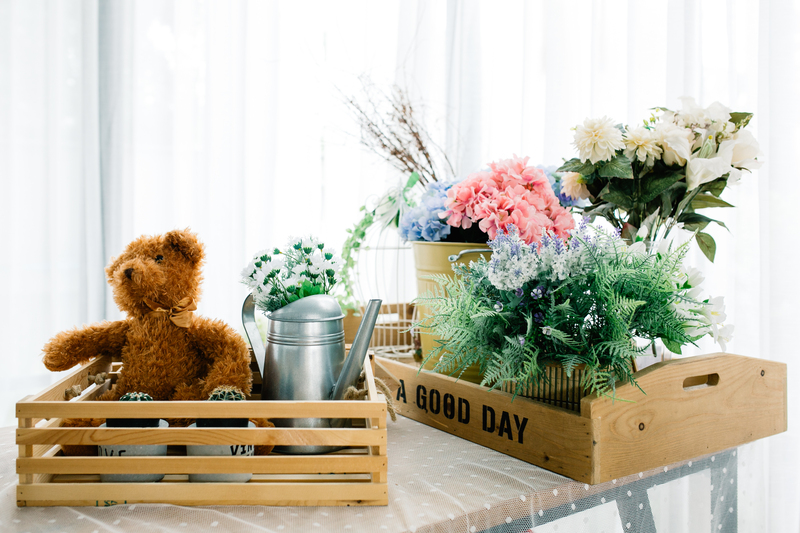Salvage Style: How to Make Beautiful Things From Broken or Unwanted Items
Have you ever looked at something broken or unwanted and wondered if you could give it a second life? Welcome to the creative world of salvage style--a design philosophy that encourages upcycling, reclaiming, and transforming discarded objects into functional art and stylish home decor. Not only does this approach promote eco-friendly living, but it also offers endless opportunities for personalization and creative satisfaction. In this comprehensive guide, we'll explore how to embrace salvage style, why it's trending, and how you can turn trash into beautiful treasures.
Why Salvage Style is Gaining Popularity
In an era of fast fashion and disposable goods, consumers are increasingly seeking sustainable and meaningful alternatives. Salvage style is more than a trend; it's a movement toward responsible consumption and creative reuse. Here are several reasons why salvage style is winning hearts and inspiring DIY enthusiasts everywhere:
- Environmental Impact: Repurposing broken or unwanted items reduces waste and conserves resources.
- Uniqueness: Salvaged creations are one-of-a-kind, giving your home distinct personality.
- Affordability: Upcycling is cost-effective--sometimes, the best decor costs nothing but creativity and time.
- Stories and Sentiment: Items rescued from the landfill often carry a history, infusing your space with character.
- Artistic Expression: Salvage style allows freedom to experiment, design, and innovate.

Getting Started with Salvage Style
Whether you're an experienced upcycler or just beginning your journey with salvage decor, it's important to approach projects with curiosity--and a willingness to see potential where others see junk. Let's break down a few foundational concepts to help you succeed with making beautiful things from broken or unwanted items.
1. Adopt a Salvage Mindset
The key to salvage style is viewing brokenness not as an end, but as a beginning. Instead of throwing away an old chair, ask--Could this be a bedside table? A plant stand? A wall shelf? Train your eye to recognize texture, shape, and structure, rather than current condition.
2. Source Salvage Materials
Finding materials is half the fun of upcycling! Look in places that might otherwise be overlooked:
- Thrift stores and secondhand shops
- Garage sales and flea markets
- Neighborhood cleanup days or curb alerts
- Demolition sites or renovation dumpsters (with permission)
- Your own attic, basement, or shed
Be safe--use gloves and watch for nails or sharp edges. Always clean and disinfect salvaged items before use.
3. Gather Essential Tools & Supplies
Invest in a few basic tools if you're diving into DIY salvage decor. Common essentials include:
- Sandpaper or power sander
- Paint brushes and non-toxic paints
- Glue, nails, and screws
- Screwdrivers, hammer, drill
- Protective gear (gloves, goggles, dust mask)
- Sealants or wood finish (for weatherproofing)
Creative Ways to Upcycle and Reimagine Salvaged Items
There is no shortage of inspiration for making beautiful things from unwanted items. Anyone can revive old, broken, or cast-off objects. Here are some of the most popular--yet remarkably simple--(salvage style projects to get you started:
1. Old Doors Turned Tables and Headboards
A salvaged door, whether in wood, metal, or glass, is full of potential. Strip or sand the door to remove old paint, then add legs to create a rustic dining table or desk. Alternatively, mount it behind your bed as a dramatic, eco-chic headboard.
2. Pallet Perfection
Shipping pallets are the darlings of the salvage world. Scrub and sand them, then use your imagination:
- Coffee tables on wheels
- Garden planters or vertical herb gardens
- Bookshelves or storage racks
3. Window Frames Full of Character
Don't send broken windows to the landfill! Instead, transform them into:
- Picture frames for displaying family photos
- Mirrored wall art by fitting in cut mirror panels
- Chalkboards for kitchens, kids' rooms, or home offices
4. Ladder Love: Vertical Storage
With a little sanding and a coat of paint, an old ladder can become:
- Shoe or towel rack
- Pot rack (when hung horizontally in the kitchen)
- Plant display shelf for your patio or living room
5. Drawer Dynamics
Repurpose orphaned drawers from broken dressers or desks for:
- Shadow boxes for memorabilia or art
- Hanging organizers for entryways
- Under-bed storage boxes on wheels
6. Tire Transformation
Don't discard that old, worn tire--clean it up and try:
- Painting and mounting it as a quirky outdoor planter
- Turning it into a rope ottoman with some basic upholstery skills
- Creating an eco-friendly playground swing
7. Lighting from Leftovers
Light fixtures can be made from almost anything. Think creatively:
- Mason jars turned pendant lights
- Colanders as kitchen ceiling lamps
- Wine bottles sliced and transformed into unique sconces
8. Textile Revivals
Old clothing, linens, or curtains can find new life as:
- Rag rugs
- Patchwork throw pillows
- Reusable tote bags
9. Metal Magic
"Junk" metal, such as rusty gears or pipes, makes innovative:
- Industrial-style shelves and brackets
- Garden sculptures
- Funky coat racks or hooks
-
Pro tip: No matter what you're creating, always prioritize safety and stability for upcycled furniture or decor.
Techniques for Salvage Style Success
What does it really take to transform broken items into beautiful pieces? It's about more than just imagination--it's also about technique. Here are proven methods for beginner and intermediate upcyclers:
1. Cleaning and Prepping Materials
Remove grime, mold, or rust from your salvage find. Use vinegar or eco-friendly cleaners--avoid harsh chemicals that could damage surfaces or leave toxic residue.
- Wood: Scrub, sand, and optionally seal before painting or staining.
- Metal: Remove rust with steel wool or a wire brush; apply a rust inhibitor if necessary.
- Textiles: Launder and press before sewing or stapling.
2. Creative Fixes for Broken Parts
Don't toss an item just because it has dents, holes, or missing hardware. Patch with wood filler, replace hardware, or embrace imperfections by highlighting them (think: wabi sabi--beauty in imperfection).
3. Painting and Finishing Touches
A fresh coat of paint can dramatically alter any item's appearance. Experiment with:
- Chalk paint for a "shabby chic" effect
- High-gloss finishes for a modern look
- Distressing techniques to enhance vintage appeal
Seal wood with wax or polyurethane to protect the finish and make your creations last.
4. Combining Materials for Unique Designs
Many of the most striking salvage style pieces mix materials--wood and metal, glass and fabric, stone and ceramic. Don't be afraid to experiment with combinations for layered, eclectic appeal.
Inspiring Salvage Style Stories
Nothing motivates like real-life success stories. Here are two examples of creative individuals who mastered the art of making beautiful things from broken items:
- From Scrap Heap to Statement Piece: Willow, an artist from Portland, found an abandoned bike frame on the curb. With some cleaning, a little welding, and a creative vision, she turned it into a hanging chandelier for her studio. The result? Functional lighting with industrial flair and a story to tell.
- Family Heritage Restored: David rescued his grandmother's old, battered sideboard from a landfill trip. Over several weekends, he carefully stripped, repaired, and stained the wood, using salvaged drawer pulls from a demolished house. The upcycled sideboard is now a centerpiece in his dining room--a legacy reborn.

Tips for Your Own Salvage Style Projects
Ready to get started? Here are some final tips to ensure your projects are safe, successful, and beautiful:
- Start small. Pick an easy project--like a picture frame or storage box--to build confidence.
- Plan ahead. Sketch your design ideas; measure twice, cut once!
- Stay safe. Wear goggles and a dust mask when sanding, painting, or cutting.
- Embrace mistakes. Some of the most charming salvage creations come from happy accidents.
- Share your work. Consider joining online DIY communities to exchange inspiration and advice.
Eco-Friendly and Stylish: Salvage Style for Every Home
Salvage style isn't just about saving money or keeping items out of landfills--it's about rewriting the story of your living space in the most creative and sustainable way. Whether you craft a quirky planter from an antique teapot, a vintage window into a statement mirror, or reinvent barn wood as a coffee table, your home becomes both an artistic haven and a testament to mindful, resourceful living.
So the next time you see a heap of "junk" destined for the trash, pause and imagine. What could it become? In the echoes of its past, you might find the inspiration to create something truly beautiful.
Salvage Style Resources and Inspirations
- Follow Instagram upcyclers and #salvagestyle hashtags for daily ideas.
- Check out local Maker Spaces for workshops and tools.
- Read books like Upcycling by Max McMurdo or browse websites such as Instructables.
Salvage style is more than a trend--it's a movement. Each upcycled masterpiece is a small act of kindness for the planet, a celebration of human creativity, and a reminder that beauty exists everywhere, if you just look with the right vision.